Rams, Jeeps, 797-hp Challengers await 2019
By John Gilbert
When Dodge Charger and Challenger were powered by almost-obscenely powerful Hemi V8 engines, the curiosity was what could Dodge do next? Next, it turns out, was the definitely-obscene Hellcats with 700 horsepower in 2015. That, we figured, was the ultimate tire-screecher. Then, a year ago, Dodge brought out the overwhelmingly-obscene 2017 Demon, with still more power and torque, and a wider-platform for enhanced stability.
Now it’s 2018, and amid rumors that companies such as Ford, and Dodge parent FCA (Fiat-Chrysler Automobiles), are considering reducing or discontinuing cars in favor of building more and more profitable trucks, we approached the “What’s New for ’19” event at the FCA Proving Grounds in Chelsea, Michigan, with even more curiosity. Turns out, a trio of crazy-powerful Challengers are coming out, and all we are lacking is new adjectives to describe them.
Back in the real world, I heckled a few good friends at the company about when it would switch over all its factories to strictly Ram trucks and Jeeps, but they didn’t take the bait. My heckle was based on the undeniable facts measuring the year-to-date production and sales of all FCA vehicles. Updated figures for the first six months of 2018 show Ram sold 189,997 pickups through June, and 110,382 Wranglers.
Those are by far the top sellers for FCA worldwide. Wrangler, all new in the last year and vastly improved overall, including the spectacular new Chrysler-built 2.0 turbocharged engine, increased sales by 38 percent from last year, through June. Ram’s top-selling figure, on the other hand, actually decreased in sales for the same period by 8 percent, because the completely redone 2019 Ram was not fully distributed to dealers early this calendar year.
However, ranking all the rest of Dodge, Chrysler, Fiat and Jeep vehicles, the order following 1. Ram and 2. Wrangler for the first six months of this year were: 3. Grand Cherokee, 91,589, barely holding off 4. the smaller Cherokee, which showed a 31 percent increase to 91,286, and 5. the Compass, also entirely new, at 72,368 for a whopping 315-percent increase. Just shows what you can do when you do a good job of reinventing a model.
The rest of the top dozen are 6. the Caravan (70,511), 7. Pacifica (53,910), 8. Renegade (41,906), 9. Journey (41,023), 10. Charger (34,786), 11. Challenger (30,545), and Durango (27,378).
Ram remains the king and is certain to increase sales as 2018 continues, but after noting the 189,997 sales for six months, if we add together all the Jeeps — Wrangler, Grand Cherokee, Cherokee, Compass and Renegade — sales are a combined 407,531.
Those are some surprising numbers, and remember, they are only for the first six months of 2018. But the Caravan, which seemed destined to be discontinued in the face of the all-new Pacifica, not only is soldiering on, it watched Pacifica sales improve by 14 percent and improved its own status to outsell its much-heralded cousin.
Real-world sales also are mitigated by image and promotion possibilities. Flashy sporty cars lure customers to the showrooms, even if they are likely to wind up buying a truck or Jeep, so What’s New for 2019 let power, power and more power command the stage, to further Dodge’s performance image.
Shortly after we got going, we were hustled to an adjacent tent where three cars awaited us, shielded by tarps. If their silhouettes all looked a lot like three Challengers, that’s what they were, and all three ride on the wide-body scheme introduced on the Demon before its short-term splash ended a few months ago. The new ones were the wide-body Challenger Scat Pack, with a 392 cubic inch Hemi and 485 horsepower; the new and improved Challenger Hellcat, with 727 supercharged horsepower and 656 foot-pounds of torque; and the new halo vehicle, the Challenger Redeye, with an incredible 797 horsepower and 707 foot-pounds from its supercharged 6.2-liter Hemi V8.
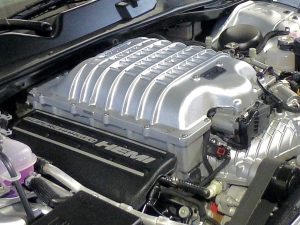
Dodge’s SRT engineers have squeezed 797 horsepower and 707 foot-pounds of torque out of the supercharged 6.2 Hemi.
Discontinuing the top-of-the-line Demon as the industry’s fastest and most-powerful domestic car ever built hardly indicate Dodge is abdicating its throne. In fact, theyFCA’s new motto is the Redeye is a “Hellcat possessed by Demons.”
The performance trio not only gets the Demon’s wider stance, for greater stability, they add larger wheels and enormous but low-profile Pirelli tires that improve road-course times in the ScatPack version by 2 seconds and improve quarter-mile dragstrip times significantly.
The Hellcat adds an 18 percent increase in airflow into the supercharger, accounting for the increased power over the outgoing Demon. And the Redeye combines all the top attributes of the Hellcat and the late Demon and hits the pavement screeching. Good way to make a shortcut to the bank, because the Redeye starts at $71,350.
Or, about as much as a fully-loaded Ram top-of-the-line crew cab pickup, decked out with every luxury feature imaginable.
Jim Morrison, who used to be the brand manager of Jeep as it rose to its greatest heights, is now the boss of Ram trucks. He offered me the chance to drive one of the new Rams around the performance course, while he jumped in the passenger seat so we could spend a little uninterrupted time renewing acquaintances.
Without question, the new Ram offers the most comfortable ride, with its rear coil springs, and has the most sophisticated interior — almost luxury sedan levels, and another reason luxury car buyers are tending toward high-end pickup trucks. Morrison said he is striving to get prospective Ford and Chevy buyers to take a test drive in the new Ram.
One of the stranger sights going around the slalom course inside the oval was me sending two of the ProMasters through the tight turns. I drove the largest high-roof ProMaster 3500 with it 159-inch wheelbase, and the low-roof 2500 with a 136-inch wheelbase. You can get both with both configurations, and both have Chrysler’s refined 3.6-liter V6. Not only do they have enough power, they have stable handling because their proven European platform features low, front-wheel-drive components under the cab for optimum traction and stability. The shorter and lower ProMaster starts at $30,195 and the higher, longer 3500 model is $40,145, both with windows on both sides. And both are crying out to be modified into roomy recreational vehicles.
I personally think the new 2.0-liter turbocharged 4-cylinder engine might be the best engine Chrysler or Fiat has ever designed and built. Strong words, I know, but when I told that to Paul Smith, the chief engineer of the 2.0, he just smiled and said, “I’m glad you like it.”
Some of the corporation’s vehicles from Jeep offer the steady and strong “Tigershark” 2.4-liter 4-cylinder, or even a larger V6, but for my money, the 2.0 beats those engines with more horsepower and torque as well as fuel economy. What else is there?
I have driven the 2.0 in the new Cherokee, and it also is available in the newest and most impressive version of the Wrangler off-road specialty Jeep. But here’s the most impressive fact: The 2.0 turbo Chrysler-designed and built 4-cylinder is also the base engine in the Alfa Romeo Giulia, which I have written is the best handling car I’ve ever driven, and is a comparative bargain with that 4 compared to the more powerful and exotic but much costlier V6.
The other secret weapon FCA has coming this fall is a new 1.3-liter turbo in the most-compact Jeep of all, the Renegade. Sworn to secrecy, all I will suggest is that if you’re looking at Jeeps for mainly commuting and general transportation and only occasional light off-roading, don’t overlook the Renegade — and for certain, don’t pass up the chance to test-drive it with the 1.3 turbo!
A decade or so ago, Detroit’s “Big Three” used to maneuver around so that all three would share in bringing in the nation’s auto writers, so with efficient use of travel we could hit General Motors on a Tuesday, Ford on a Wednesday and Chrysler on a Thursday in the same trip. No longer. Ford and GM have dropped out of the media-intro sequence, leaving it up to FCA to gather journalists to Auburn Hills, just outside Detroit.
That facility is under reconstruction, so we were limited to a shortened oval, ending with an entry to a tight, winding handling course with a half-dozen tight switchbacks. There were also off-road, drag-racing and autocross courses set up, although I found the limited time gave me the best chance to shake down the most vehicles by sticking to the oval and multi-switchback handling course.
FCA officials also handcuffed us by putting an information embargo on most of the vehicles, meaning we can’t write or report on them until either September 1 or October 1. We can wait. Maybe by then I can get a ProMaster converted to RV, with a Fiat 500e stashed inside.
And yes, I will eagerly await a week with the 2019 Challenger Redeye.


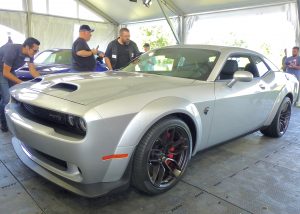
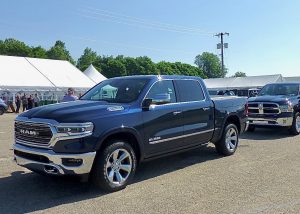
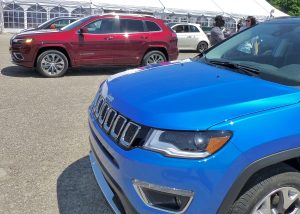
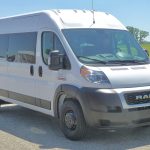
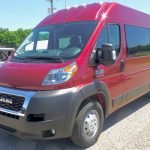
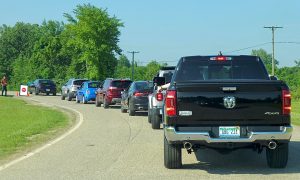
 John Gilbert is a lifetime Minnesotan and career journalist, specializing in cars and sports during and since spending 30 years at the Minneapolis Tribune, now the Star Tribune. More recently, he has continued translating the high-tech world of autos and sharing his passionate insights as a freelance writer/photographer/broadcaster. A member of the prestigious North American Car and Truck of the Year jury since 1993. John can be heard Monday-Friday from 9-11am on 610 KDAL(www.kdal610.com) on the "John Gilbert Show," and writes a column in the Duluth Reader.
John Gilbert is a lifetime Minnesotan and career journalist, specializing in cars and sports during and since spending 30 years at the Minneapolis Tribune, now the Star Tribune. More recently, he has continued translating the high-tech world of autos and sharing his passionate insights as a freelance writer/photographer/broadcaster. A member of the prestigious North American Car and Truck of the Year jury since 1993. John can be heard Monday-Friday from 9-11am on 610 KDAL(www.kdal610.com) on the "John Gilbert Show," and writes a column in the Duluth Reader.